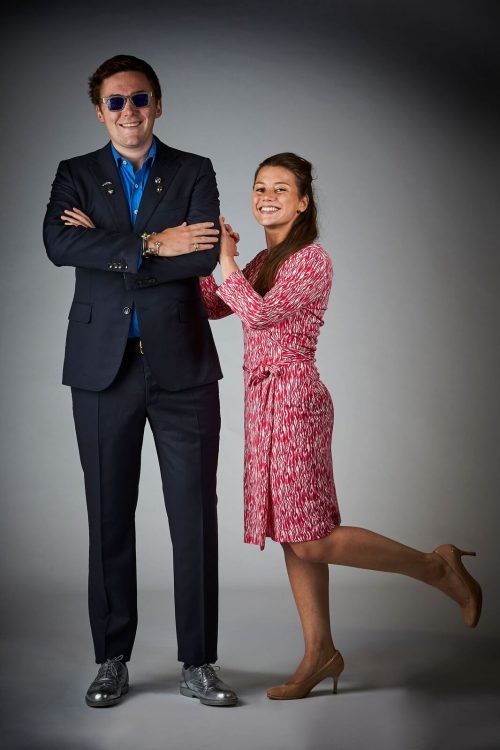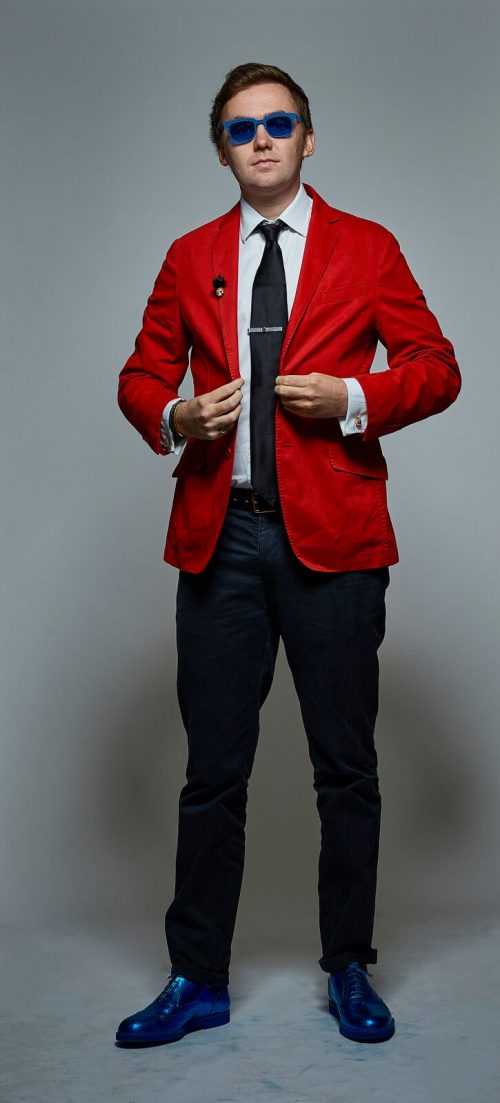
There often comes a plateau for a startup that’s been growing well. One of the most enticing elements of starting your own business is that, technically, the sky is the limit and growth is always possible. But scaling in almost all cases requires investment, which, if you’re young and inexperienced, can be extremely hard to come by.
I run a sustainable fashion brand with my girlfriend, Deborah Marx. We launched in January 2014 with a £6,000 government startup loan and named it after me because tomcridland.com was the cheapest domain name I could find. In our first year of business we made trousers from fabric sourced from Biella in northern Italy for high profile names such as Nigel Olsson, Elton John’s drummer, Leonardo DiCaprio, Ben Stiller, Sir Rod Stewart, Daniel Craig and many more. This was the result of meticulous research to find the right contacts on their respective management teams followed by a carefully worded and concise email, offering them the opportunity to try our clothing free of charge and, importantly, with no strings attached.
This definitely helped us spread the word about our brand but making our offering more sustainable made it really take off. After watching the documentary The True Cost, I realised fast fashion is causing our world grave social, economic and environmental harm. We decided to see if we could make a garment so well that we would guarantee it for a certain length of time, repairing or replacing it should anything go wrong. The 30 Year Sweatshirt was born.
Our turnover grew to £1m, buoyed in part by a great deal of press coverage. For a company started on a shoestring by two university graduates with no experience and no marketing budget, it was overwhelming to get so much international exposure. We knew we needed to scale to cope with demand – there were bigger stock orders to place, and we needed a full-time logistics and customer services team – so we went looking for investment.
It was not a great experience. Not a single potential investor that we met seemed interested in us retaining our creative control. We left meetings feeling that there must be another way to fund the next steps we had to make, without relinquishing the freedom that made entrepreneurialism seem so appealing in the first place.
It occurred to us that our experience of securing press and celebrity endorsements for the Tom Cridland brand, without any sort of marketing budget, might be a skillset we could monetise. We also knew, from our experiences as founders of a startup, that the traditional PR model is fast becoming outdated. PR is seen by many small business owners as overpriced and inflexible, with 12- or 24-month contracts and interns who do most of the day-to-day legwork.
As two people who had successfully built our brand’s profile from nothing, we were confident that potential clients would like the fact we could see things from their perspective. In order to achieve our funding needs for Tom Cridland, which amounted to a minimum of a further £250,000, we also would only need a maximum of 15 to 20 clients, who we knew we’d be able to comfortably split the work for. The best thing about our second business is we had no barely any overheads, as we have always worked from home or remotely, pay ourselves a relatively small salary, require no employees and put in nothing but our time and skill set.
Tom Cridland Public Relations was founded in November 2015 and by January 2016, we had more than 15 clients. We have been able to reinvest in our brand, and today The 30 Year Collection comprises t-shirts, sweatshirts and jackets. We still have our range of trousers and recently launched The Entrepreneur’s Shirt.
We used revenue from our second business to redesign the website and have a full-time team at the superb logistics centre Dooley Rumble working on dispatch, customer services and inventory management for us.

The best part about our second business is we really enjoy working with our clients, who range from Savile Rowe tailors to multi-million pound funded startups, and regional SMES in a diverse range of sectors. Dividing our time between the two companies has come naturally to us. Some people get the impression that we risk stretching ourselves too thin but it is organisation as opposed to overwork that allows us to do this, and we are now involved in a third business venture, a rock n’ roll band, called The Tomicks. I am the co-songwriter, singer and drummer, and Debs is also a singer. Splitting our time between these businesses only requires high levels of organisation for us and does not require over-work. A typical day for Debs and I might be to wake up and 8, exercise and have breakfast, work for our PR clients in the morning (unless I have meetings with potential new ones or an interview with the press, in which case I would attend these), break for lunch, either at home with family or out with friends, then continue work for PR clients in the afternoon before doing one or two hours of work on the clothing brand in the early evening. Then, at about 8, we would usually do one of three things: meet up with friends for dinner, drinks or a concert, have a songwriting, rehearsal or recording session with The Tomicks or watch Netflix and a film before getting an early night! Every day is different, however, and good planning is the key to ensure we meet all our responsibilities whilst enjoying our working and private lives.
Our recommendation to other young entrepreneurs, especially those with limited financial resources, is to try to avoid giving away equity too early and to treat getting into debt as a last resort. Developing your business ideas would be so much easier if startup capital was easy to come by, but part of the thrill of entrepreneurship is thinking outside the box to get things done. What was initially a dilemma for us, became a business with no overheads that generated nearly 100% profit and enabled us to fund our other passions. It’s taught us that there is no substitute for enthusiasm channelled effectively.
There are so many skills that can be monetised and it is often excessive modesty or a lack of self-belief that would prevent a young entrepreneur from funding their passion through a second service based business. Talents such as writing, photography, branding, graphic design, social media operations, book-keeping and so many more are possessed by many people who don’t create revenue from them. Pitching successfully for clients of this nature is the only thing holding anyone back from monetising their skill sets to fund another business. All that is required to pitch successfully for these clients is an ability to target potential ones effectively, to articulate what about your service makes it better than competitors and to send that introduction to the correct contact details. If you can do this efficiently, leads and secured business will inevitably follow and you will be on the way to quickly funding your entrepreneurial dream without getting into debt, giving away equity or having to compromise.
Hundreds of Business Opportunities – Visit the Home Business EXPO
Find a Home-Based Business to Start-Up >>> Hundreds of Business Listings.














































